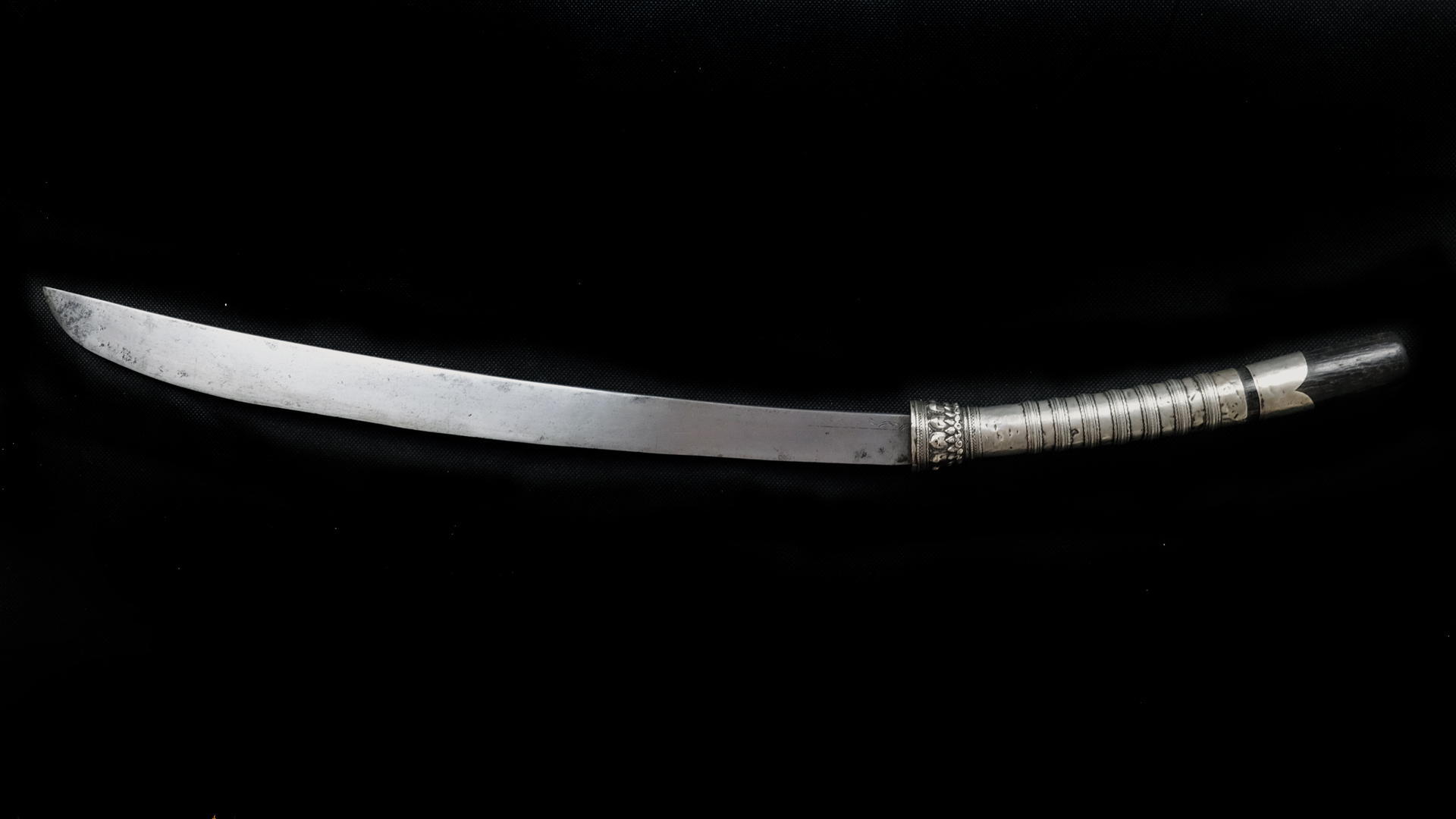.jpg)
Swords and Individualism
October 9, 2023 Asian Arms
One of the interesting characteristic of dha/daab is the endless variety but also common patterns. While many dha or daab were made for in large numbers for military purposes and generally follow a familiar form, there are others that exhibit countless variations and configurations as a reflection of their owners. This can range from decoration, talismanic elements, changed pommels and furniture and use of exotic materials but also at a more fundamental level the core elements of the sword which dictate its use and function.
A prime example of this is one of the more unusual features of dha/daab, the ratio of handle to blade length. This is widely variable within this family of swords, from extremely long handles on the swords of some hill tribes, verging on polearms, through to short handles with ratios that would be familiar to a user of a tulwar, shamshir or other sabre.
The subject of this article is one of those examples, it is likely from Laos and features a thick and sturdy blade. While a common configuration for a dha for this region would be for the handle to comprise roughly a little more than a third of the total length, this sword features a rather short horn handle that is actually only little more than a quarter of the overall length. The material itself is an interesting choice, horn is not unknown with dha, but usually it is a dark brown or black, not nearly blond in the light as this one is. Also, it is usually in essence a pommel, fitted to a longer grip tube or handle. In this case the horn is the handle with only a silver ferrule and a samrit guard plate fitted.
.jpg)
The blade is of a type with a rounded tip that is sharp across the entire curve and a deep V shaped spine. This is a very capable fighting sword and shows signs of use including dents on the blade consistent with blocking.
.jpg)
This is of course logical when the dha/daab family is considered any overarching family of sword types in southeast Asia, not as a particular sword form. Multiple styles of swordsmanship as well as regional, tribal and personal preference come into play. This is not the only dha I own with a short handle, another in the collection seems to perhaps even have been cut down intentionally to suite the preference of the user, this can be due to their role such as a bodyguard, a need based on a potential style of fighting such as close quarters, within building such as palace guard might require or a host of other preferences and requirements.
The sword in question is a type commonly associated with Laos and by some with the Chamapasak area in particular due to the type of silverwork and decoration. I am always cautious of this sort of attribution but it seems likely the sword is from southern Laos in any case. It perhaps once had a longer hardwood hilt but was obviously deliberately modified with the current configuration, the balance is still excellent and brutally effective.

Other pieces may be seen with old repairs or modifications that similarly change weight, balance and hilt length such as this exceptionally old piece which I suspect was made this way from the start but pairs an almost katana like blade with a type of samrit handle most often found on swords in the general regions of southern Laos, parts of Vietnam and Camobdia. Typically these handles would consist of an additional grip tube and pommel but in this case a pommel has been fitted to the middle grip section shortening the handle and entirely changing to profile and balance of the weapon from the more commonly seen configurations. The work is very old and I have no reason to suspect it is not in fact the original way the sword was made, particularly as it is paired with a very atypical scabbard reflecting Japanese stylistic influences.
.jpg)
This includes a carved wooden kurigata and a carved space for a kozuka (although it likely never had this small scabbard knife). This is simply another example of the myrid of forms, cross cultural influences and again, crucially, personal preferences to be found in these swords.
.jpg)
It is quite common in western collecting circles to be suspicious of swords that do not fit a certain expected appearance, proportions or style. Some of this is of course justified, swords can be easily modified in their lifetime, both within a culture and within a period of actual use, but equally outside of the source culture and often quite badly, whether in misguided attempts at restoration or more dubiously, in an attempt to raise perceived value by making the item 'unique'. Caution is always justified but in the world of dha/daab there is so much variation that an unusual element and design is quite often simply a reflection of the variety of peoples, cultural influences, martial styles and of course the personalities of the users of these fascinating weapons throughout the centuries.